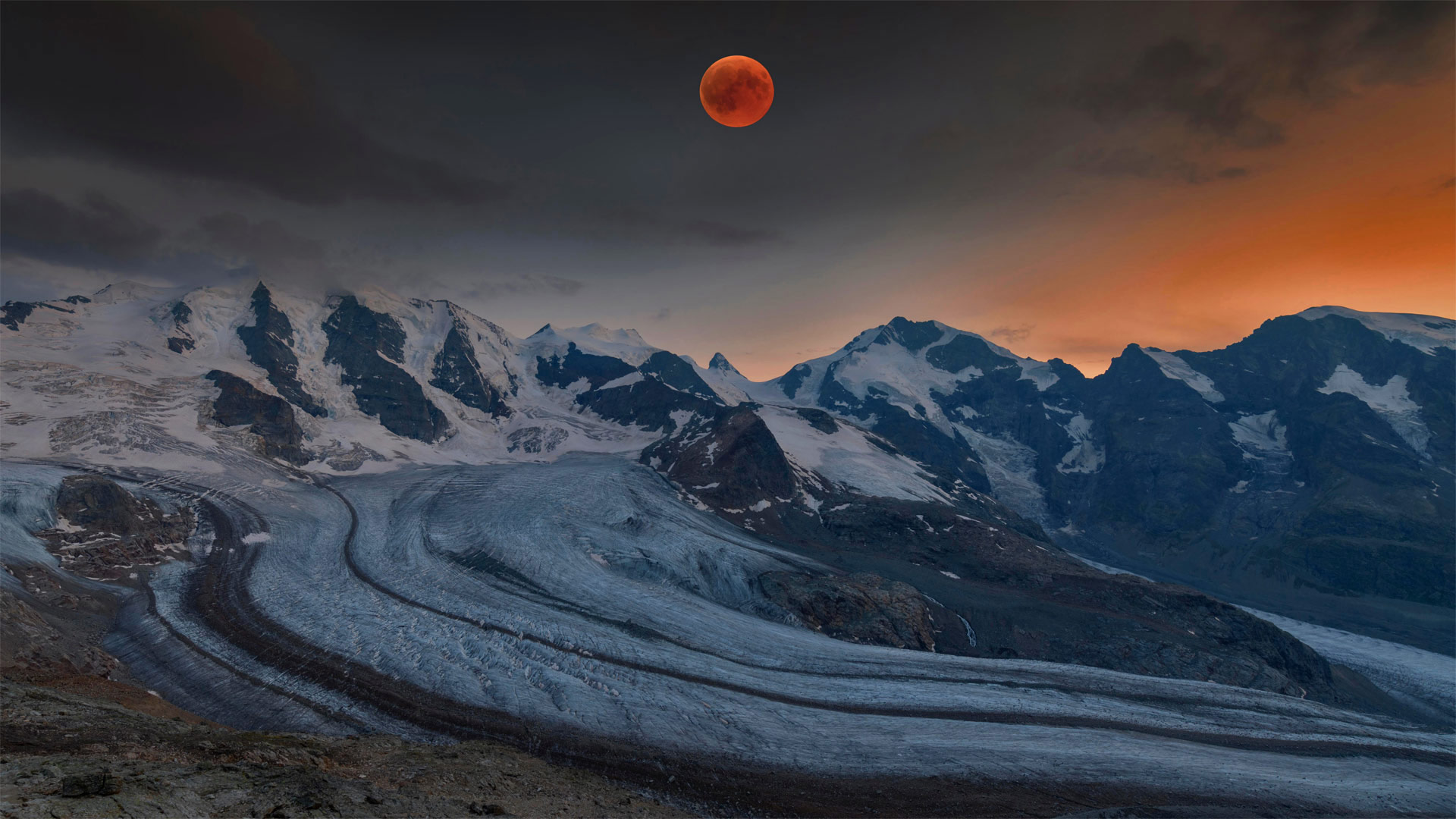贝尔尼纳山脉和血月,瑞士 Panoramic view of the Bernina Range with blood moon, Eastern Alps, Engadin, Switzerland (© Bernd Zoller/Shutterstock)

贝尔尼纳山脉和血月,瑞士 Panoramic view of the Bernina Range with blood moon, Eastern Alps, Engadin, Switzerland (© Bernd Zoller/Shutterstock)
准备迎接血月 Get ready for the blood moon
Lunar eclipse
If you're lucky enough to find yourself under a cloudless sky tonight, you'll be able to see one of our solar system's great wonders, a full lunar eclipse, also known as a 'blood moon.' The spooky nickname derives from the reddish hue the moon takes on when Earth casts its shadow upon it. Featured here is a blood moon over the Swiss Alps. A full lunar eclipse occurs when the Earth and moon align perfectly with the sun, and the moon falls directly behind Earth's shadow. When Earth falls behind the Moon's shadow, a solar eclipse occurs.
While total eclipses of the sun get more attention and make a more dramatic entrance, total lunar eclipses are majestic in their own right and are much more user-friendly. For one, you can look directly at a total lunar eclipse without any worry of harming your eyes. And they're viewable by far more people than solar eclipses. That's because a total lunar eclipse can last for hours, while solar eclipses last just a few minutes. In addition, lunar eclipses are viewable anywhere on the nighttime side of the world while total solar eclipses occur only within a narrow longitude on the planet.
Tonight's lunar eclipse coincides with the Flower Moon, the full moon of every May. It can be seen from Europe, Africa, and parts of Asia, but is best viewed from North and South America. While not exactly rare, total lunar eclipses don't occur too often, and even when they do, they can be hidden by cloud cover. If you miss tonight's blood moon, you'll get a second chance this year in November. Your next chance after that will be in three years, so you might want to plan to stay up late tonight.
月食
如果你足够幸运,今晚能在万里无云的天空下发现自己,你将能够看到我们太阳系的一大奇迹,月全食,也被称为“血月”这个令人毛骨悚然的绰号源于当地球把它的影子投射到月球上时,月球呈现出的微红色。这里的特色是瑞士阿尔卑斯山上的血月。当地球和月球与太阳完全对齐,月球直接落在地球阴影后面时,就会发生月全食。当地球落在月球的阴影后面时,就会发生日食。
虽然日全食得到了更多的关注,并做出了一个更引人注目的入口,但月全食本身就很壮观,而且更方便用户使用。首先,你可以直接看到月全食,而不用担心会伤害你的眼睛。比起日食,人们能看到的人要多得多。这是因为月全食可以持续数小时,而日食只持续几分钟。此外,月食在世界夜间的任何地方都可以看到,而日全食只发生在地球上一个狭窄的经度范围内。
今晚的月食与每年五月的满月——花月重合。从欧洲、非洲和亚洲部分地区都可以看到它,但从北美和南美看得最好。虽然并不十分罕见,但月全食并不经常发生,即使发生,也可能被云层掩盖。如果你错过今晚的血月,你将在今年11月获得第二次机会。之后的下一次机会是三年后,所以你可能想今晚熬夜。
评论已关闭